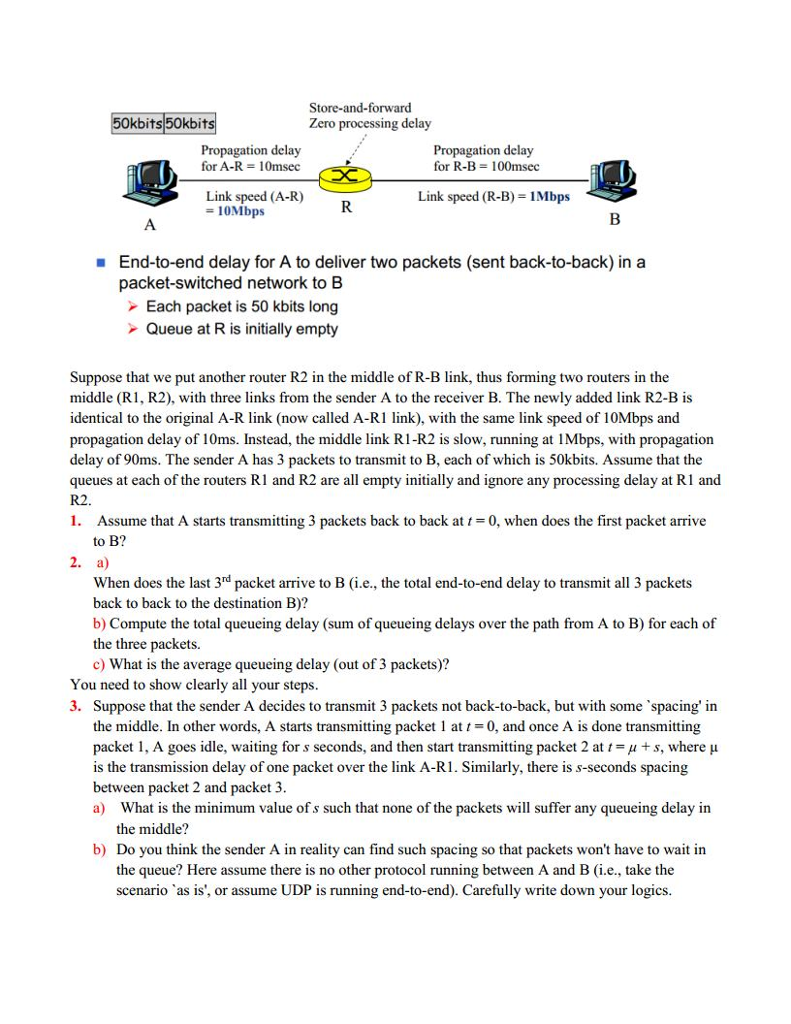Answered step by step
Verified Expert Solution
Question
1 Approved Answer
End-to-end delay for A to deliver two packets (sent back-to-back) in a packet-switched network to B Each packet is 50 kbits long Queue at R

Step by Step Solution
There are 3 Steps involved in it
Step: 1

Get Instant Access to Expert-Tailored Solutions
See step-by-step solutions with expert insights and AI powered tools for academic success
Step: 2

Step: 3

Ace Your Homework with AI
Get the answers you need in no time with our AI-driven, step-by-step assistance
Get Started


